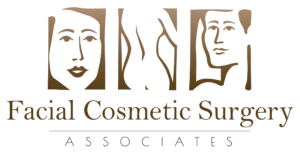Rhinoplasty (also called a nose job) is a common surgery performed more than 200,000 times a year in the United States. The first documented rhinoplasty procedure was in 1887 by an otolaryngologist named John Orlando Roe.
However, prior to Roe’s publications in the late nineteenth century, historical evidence of nasal reconstruction procedures can be found as early as 600 BC.
Today, rhinoplasty has evolved into one of the most common and safe plastic surgeries available. If you’re getting a nose job or are considering one, here are four important things to know about rhinoplasty.
1. The Consultation Is Important
Every surgery begins with a consultation, but here’s why the rhinoplasty consultation is so important.
During your consultation, you will be able to describe your desired outcome to your surgeon. It’s helpful to bring along photos of noses you like to help your surgeon better envision your goals.
Your provider will probably utilize computer imaging technology to help you visualize what your rhinoplasty will look like. They’ll create a computer-generated simulation of your after results, and from there, you can evaluate any potential changes or adjustments.
The consultation is also essential for your overall comfort. Yes, rhinoplasty is one of the most commonly performed surgeries, but that doesn’t mean it isn’t complicated.
The consultation allows you to get comfortable with your surgeon and see examples of their past surgeries. Don’t be afraid to request before and after photos of nose jobs they’ve done before. Your surgeon may even have an example of past work of something similar to what you want.
2. Rhinoplasty Can Also Be a Medical Procedure
Rhinoplasty is more than just a cosmetic procedure. In many cases, it’s a life-changing medical procedure!
By definition, rhinoplasty is a surgery that changes the structure of your nose. Some patients need rhinoplasty surgery to correct structural issues responsible for health problems.
Septoplasty
Septoplasty is a type of rhinoplasty that addresses problems associated with a deviated septum. A deviated septum is a condition where the septum (the wall that separates the nasal passages) is crooked.
Symptoms of Potential Deviated Septum
In most cases, there aren’t actually any noticeable symptoms of a deviated septum. However, in severe cases, some symptoms can include:
Facial Pain
Typically, a deviated septum occurs because the nasal septum is unevenly displaced to one side. Patients will feel one-sided facial pain on the same side as the uneven displacement.
Nosebleeds
Frequent nosebleeds are often a symptom of a deviated septum. Nosebleeds happen because the surface of the nasal septum becomes dry and vulnerable to bleeding.
Breathing Obstructions
A deviated septum may affect how well you can breathe out of one or both of your nostrils. If you have trouble breathing or go through cycles where sometimes it is harder to breathe, you could have a deviated septum.
Snoring and Other Noisy Breathing
Patients with deviated septum typically complain of snoring and noisy breathing. This is likely due to the nasal tissues surrounding the septum becoming inflamed.
A deviated septum can wreak havoc on your health, especially if it interferes with your ability to breathe and sleep well.
3. There’s Such Thing as a Rhinoseptoplasty
A rhinoseptoplasty is a combination of both internal and external changes to the nose. Rhinoseptoplasty surgery is typically performed as a result of some sort of defect that affects both the patient’s breathing and function and the appearance of the nose.
Rhinoplasty Categories
There are two main categories of rhinoplasty surgery: closed nasal surgery and open nasal surgery. These categories refer to where incisions are made during surgery.
Open Rhinoplasty
An open rhinoplasty describes a surgery where the incision is made between the nostrils across the divider.
After the incision is made, the surgeon is able to lift the top of the nose to access the internal structures of the nasal cavity. This full, unrestricted access then allows them to make the necessary changes for the patient’s treatment goals.
Closed Rhinoplasty
Contrary to open rhinoplasty, a closed rhinoplasty involves no incisions made to the outside of the nose. For some patients, this is beneficial because this means no visible stitches.
However, a closed rhinoplasty is much more restrictive and limits the surgeon’s abilities. Although surgeons make external incisions during open rhinoplasty, the stitches are so small that they’re barely noticeable.
Ultimately, the type of rhinoplasty you have is mainly dependent on your surgeon’s discretion. They will determine the best procedure for you based on your treatment goals and existing facial structures.
4. No Two Rhinoplasty Procedures Are Alike
Every rhinoplasty is unique and customizable. This is because everyone’s face is different, and a good surgeon will not offer to model your nose after another person’s nose if your face doesn’t suit it.
The goal of rhinoplasty is to ensure the patient has a balanced, flattering nose that both looks and functions well. Your surgeon will evaluate your existing facial structure and make measurements and decisions based on your unique features.
Discover Rhinoplasty in Sacramento
There are hundreds of cases of rhinoplasty in Sacramento every year. Kaniff Cosmetic Medical Center is the leading provider of facial cosmetic surgery in the Bay area.
With decades of combined experience and expertise in the field of facial reconstruction, you can trust the expert medical team at Kaniff Cosmetic Medical Center to deliver the highest level of customer experience and results.
Dr. Thomas Kaniff is a board-certified facial plastic surgeon with over 20 years of experience. Throughout his years of practice, he has specialized in procedures such as rhinoplasty.
To learn more and schedule a consultation, contact Kaniff Cosmetic Center today!


